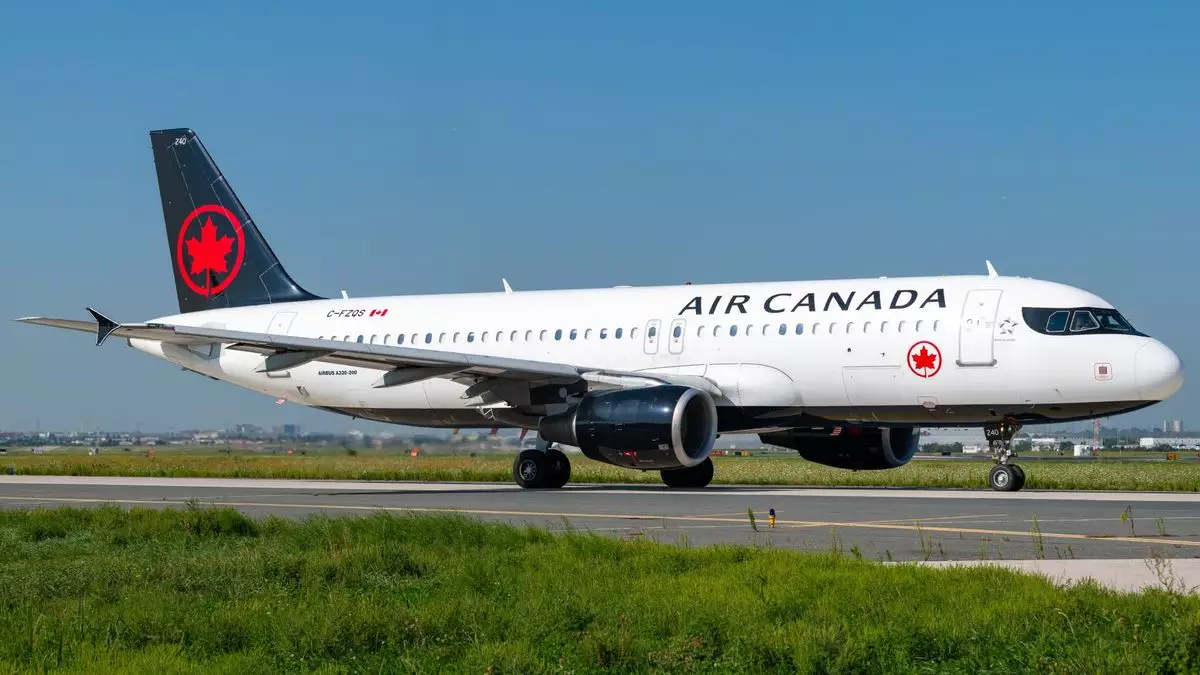In an impressive turn of events, Air Canada and the Air Line Pilots Association have announced a tentative labor agreement that could stave off what many feared would be a crippling strike impacting Canada’s largest airline. After extensive negotiations that reportedly lasted for over a year, the four-year collective agreement was revealed early Sunday. This agreement seeks to recognize the vital contributions made by pilots operating for both Air Canada and its subsidiary, Air Canada Rouge. Notably, the terms of the contract remain confidential and await ratification from union members and a nod from the airline’s board of directors within the coming month.
The decisive vote by the Air Canada Master Executive Council, which represents over 5,400 pilots, is a testament to the unity and perseverance shown during prolonged talks. With a reported potential of generating an additional $1.9 billion for pilots over the agreement’s duration, the stakes were high, and the pressure to find common ground was mounting. As Charlene Hudy, chair of the executive council, pointed out, the road to this agreement was long, formidable, yet marked by resolute determination and active engagement from the pilots.
The tentative agreement reportedly makes significant strides on core issues that have long been at the forefront of the negotiations—namely, compensation, retirement provisions, and working conditions. Despite Air Canada enjoying record profits, pilots have been vocal about needing wages that align more closely with their U.S. counterparts. This disparity, coupled with what the union describes as below-market compensation, highlighted the tensions between employee expectations and corporate financial realities.
Throughout the negotiation process, Air Canada’s stance appeared conflicted; while it expressed a commitment to shaping a favorable work environment, it simultaneously found itself at odds with union demands that exceeded their budgetary constraints, as noted by Air Canada spokesman Christophe Hennebelle. The precarious nature of these negotiations had significant implications; the union could have issued a 72-hour notice that would have instigated a complete wind-down of operations by September 18.
In the backdrop of these critical talks, Canadian Minister of Labor Steven MacKinnon publicly commended both parties for their hard work. He contended that negotiated agreements are the most beneficial outcomes for aviation employees and the travel industry as a whole. However, sentiments from the public and industry leaders were mixed, with anxiety rippling through the business community leading up to the deal. Prior to the announcement, many voiced concerns to the government about the ramifications of a potential shutdown, particularly with Air Canada serving over 110,000 passengers daily.
Calls from influential business groups, like the Canadian Chamber of Commerce and the Business Council of Canada, urged the federal government to engage actively in preventing disruptions, even suggesting binding arbitration. This begs the question—should the government intervene in private sector negotiations? NDP Leader Jagmeet Singh took a firm stand against any legislative efforts to solicit a back-to-work order, showcasing the political complexities which surrounded these negotiations.
Looking Ahead: Sustainability and Relations
While this agreement is being celebrated as a substantial achievement, it raises pertinent questions about the future relations between Air Canada and its pilots. The triumph of this deal must not overshadow the underlying tensions that existed throughout the negotiation process. Air Canada’s ability to maintain strong labor relations will be critical in ensuring that it not only upholds operational stability but also fosters an environment in which its pilots feel valued and adequately compensated.
Furthermore, the upcoming ratification process by union members will serve as a crucial test. If the deal is accepted, it could set a precedent for future negotiations across the aviation industry, highlighting the need for competitiveness in compensation amid soaring profits. If rejected, the potential for renewed tensions could surface, dragging the airline back into a precarious negotiation landscape.
While the tentative agreement offers a momentary respite from a looming crisis, its implications extend beyond immediate relief. This agreement not only has the potential to shape the future of Air Canada and its reputable pilots but also offers a critical glimpse into the broader discourse regarding labor relations, competitiveness, and employee satisfaction in the aviation sector. The road ahead will likely be determined not just by collective agreements but by the sustainable cultivation of a work environment where employees feel heard, valued, and fairly compensated.

